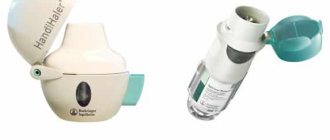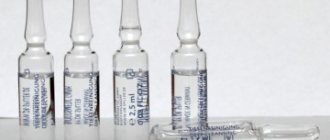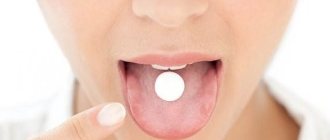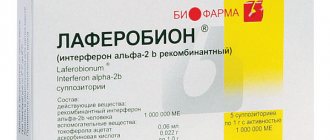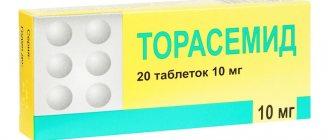Release form and composition
Dosage form - tablets: round, flat-cylindrical, 10 mg - with a bevel, 70 mg - with a separating line and a bevel, almost white or white in color, with slight marbling (10 mg - 10 pcs. in a blister pack, in a cardboard pack of 1 or 3 packs; 70 mg – 4 pcs in a blister pack, 1, 2 or 3 packs in a cardboard pack; 10 pcs in a blister pack, 1 pack in a cardboard pack).
1 tablet of Alendronate contains:
- Active ingredient: sodium alendronate (in terms of alendronic acid) – 10 mg or 70 mg;
- Auxiliary components: lactose monohydrate, potato starch, colloidal silicon dioxide, calcium stearate, povidone (low molecular weight polyvinylpyrrolidone).
Contraindications
- Pathologies of the esophagus that delay the processes of its emptying (including achalasia, strictures);
- Hypocalcemia;
- Inability to sit or stand upright for 30 minutes or more;
- Lactose intolerance, glucose-galactose malabsorption syndrome, lactase deficiency;
- Chronic renal failure, with creatinine clearance (CC) less than 35 ml/min;
- Pregnancy and breastfeeding period;
- Children and adolescents up to 18 years of age;
- Hypersensitivity to the components of the drug.
It is recommended to prescribe the drug with caution to patients during periods of exacerbation of diseases of the gastrointestinal tract (GIT): gastritis, dysphagia, duodenitis, esophagitis, peptic ulcer of the stomach and duodenum; with severe gastrointestinal pathologies, such as gastrointestinal bleeding, peptic ulcer, surgery on the upper gastrointestinal tract (except pyloroplasty), undergone during the previous 12 months; with a predisposition to hypocalcemia (calcium malabsorption, hypothyroidism); with cancer, vitamin D deficiency and other disorders of mineral metabolism; with the simultaneous use of corticosteroids and other drugs, chemotherapy and/or radiation therapy; with poor oral hygiene (including dental diseases, periodontitis), coagulopathy, anemia, concomitant infectious and other pathologies.
Directions for use and dosage
The tablets are taken orally, swallowed whole, preferably 2 hours, but later than 0.5 hours, before the first intake of water, food or other medications. You should drink only plain water, as tea, mineral water, orange juice or coffee reduce absorption.
The use of Alendronate should be accompanied by vitamin D and calcium in a dose that meets the daily requirement.
The optimal duration of bisphosphonate therapy has not been established. It is determined by a doctor on a regular basis, especially in patients after use for five years or more.
Recommended dosage:
- Postmenopausal osteoporosis in women, and osteoporosis in men: 70 mg once a week or 10 mg once a day;
- Paget's disease: 40 mg once a day, course of therapy for six months.
For elderly patients, patients with functional liver disease and/or mild to moderate renal failure (creatinine clearance 35-60 ml/min), no dose adjustment is required.
If you miss the next dose of the drug on the prescribed day (when taken once a week), the tablet should be taken in the morning of the next day, provided that this does not take two tablets at the same time. Then continue application according to the established scheme.
Indications for use
Alendronate 70 mg is a medicine with a narrow spectrum of action. The scope of its application is very limited. But this is precisely what indicates that the medicine is effective.
A course of treatment with Alendronate sodium is prescribed if the following pathologies are detected in a patient:
- Osteoporosis in women after the end of lactation. Pregnancy and breastfeeding lead to the removal of calcium from a woman’s body. The medicine helps to restore the natural structure of bones in a short time.
- Decreased bone mass in men. In most cases, this is a consequence of osteoporosis, which develops due to long-term use of steroid drugs or poor nutrition.
- Paget's disease in men. This is a rare disease associated with impaired regeneration and replacement of bone tissue. The disease can only be cured with drugs based on alendronic acid.
Before using the medication, you should consult a specialist. There are certain restrictions that should be taken into account so as not to harm your own health.
Side effects
In general, the use of Alendronate is well tolerated; the severity of side effects is usually mild and does not require discontinuation of the drug.
Adverse effects of the drug with an incidence of more than 1% of patients established during clinical trials:
- Digestive system: nausea, abdominal pain, constipation, diarrhea, sour belching, dyspepsia, dysphagia, esophageal ulcer, gastritis, flatulence, gastric ulcer, melena;
- Nervous system: headache;
- Musculoskeletal system: bone pain, muscle cramps, myalgia, joint pain.
Side effects recorded in widespread clinical practice:
- Nervous system: dizziness, disturbance of taste, systemic dizziness;
- Digestive system: nausea, vomiting, esophageal erosion or ulcer, perforation, gastritis, melena, esophageal stricture, oropharyngeal ulcer, esophagitis; rarely - peptic ulcer of the stomach and duodenum (relationship with the drug has not been confirmed), osteonecrosis of the jaw (local), more often associated with a previous local infection (including osteomyelitis) and/or tooth extraction;
- Metabolism: hypocalcemia; rarely - peripheral edema;
- Musculoskeletal system: myalgia, pain in joints and/or bones; rarely – severe forms of joint swelling, hip fractures;
- Allergic reactions: urticaria, rarely - angioedema;
- Sense organs: rarely – scleritis, uveitis, episcleritis;
- Dermatological reactions: skin itching, rash, alopecia, photosensitivity; rarely - erythema, toxic epidermal necrolysis, Stevens-Johnson syndrome and other severe skin reactions;
- Other: asthenia, malaise, myalgia; rarely – fever (transient in nature, appearing at the beginning of therapy).
special instructions
When prescribing Alendronate, the doctor must inform the patient in detail about the rules for taking pills and the consequences of failure to follow the recommendations.
To reduce the irritating effect on the esophagus, the tablet should be taken immediately after getting up in the morning, washed down with a full glass of water and not take a horizontal position for 0.5 hours after taking it (risk of developing esophagitis).
The patient should pay special attention to signs of adverse reactions from the esophagus. If heartburn, chest pain, dysphagia or pain when swallowing occurs, stop taking the drug and consult a doctor.
Due to the positive effect of the drug on bone mineral density, slight asymptomatic decreases in serum calcium and phosphate concentrations may be observed. This is of particular importance for patients on glucocorticosteroid therapy, since their calcium absorption may be reduced.
Risk factors for the development of osteonecrosis of the jaw include: concomitant therapy (chemotherapy, radiation therapy, corticosteroid drugs), diagnosed cancer, gum disease, anemia, infections, coagulopathy.
Surgical dental procedures can increase the manifestations of osteonecrosis of the jaw.
The decision on the advisability of using the drug must be made after assessing the ratio of the expected benefit of therapy and the possible risk for each patient individually.
The effect of alendronic acid on the patient’s ability to drive vehicles and machinery has not been established.
Drug overdose
Overdose is possible in cases where the single dose of the medication is exceeded.
In such cases, the following complications may occur:
- diarrhea;
- vomit;
- heartburn;
- nausea;
- esophagitis;
- erosive and ulcerative lesions of the gastrointestinal tract;
- hypophosphatemia;
- hypocalcemia.
In case of overdose, you should immediately take one of the antacids containing calcium to neutralize the effect of alendronic acid.
At the same time you need to drink several glasses of milk. You should not lie down and induce vomiting, as this will irritate the intestinal mucosa. If the symptoms recur the next time you take the drug, then further treatment should be stopped and consult your doctor. It is possible that the course of treatment will be adjusted and other medications will be prescribed to mitigate side effects.
Drug interactions
When used concomitantly with oral medications, including antacids and calcium-containing drugs, the absorption of alendronic acid may be reduced, so these combinations should not be allowed. If concomitant therapy is necessary, the interval between taking Alendronate and other medications should be 0.5 hours or more.
The side effects of alendronic acid on the gastrointestinal tract can be enhanced by its combination with acetylsalicylic acid and other non-steroidal anti-inflammatory drugs.
Combination therapy with estrogen preparations (observing the interval between doses) does not change their action or develop side effects.
The bioavailability of alendronic acid is not affected by oral administration of prednisolone.
Patient reviews of Alendronate
Nikolay, 35 years old, Naryan-Mar:
For a long time he was forced to take glucocorticosteroids. I was cured of one disease, but another one came - osteoporosis. I found out about this purely by chance when I was undergoing a routine medical examination. The doctor prescribed this medicine. I had to wait three months for the first results, and full recovery came only after a year. While undergoing treatment, I experienced stomach discomfort. I had to switch to a gentle diet. Now everything is fine with both the bones and the stomach.
Natalya, 36 years old, Nizhny Novgorod:
She gave birth to twins, then breastfed the children for several months. I had to stop lactation because osteoporosis was discovered. The doctor said that in a couple more months the bones will start to break. I took Alendronate for six months, there were no side effects, except for slight nausea. At the end of the course of treatment, I was examined - the bone tissue was almost restored, everything was fine. Now I take prophylaxis with Alendronate every six months.
Alexander, 68 years old, Vorkuta:
Osteoporosis was detected during radiography. The doctor said that it was due to a lack of vitamins and age, and prescribed a course of taking Alendronate. I’ve been taking it for a month, so far no positive results have been observed. But there are a number of side effects - the kidneys and stomach began to hurt, weakness and nausea appeared. I filed a complaint with the doctor, he recommended continuing treatment for another month, after which a final decision will be made. As long as I endure and heal, we will see what happens next.
Elena, 55 years old, Moscow:
When menopause was diagnosed, the doctor recommended taking a prophylactic course of taking Alendronate. I took the medicine for 6 months, periodically visiting a specialist. Everything went well without serious complications. My bones are saturated with minerals and I feel good. Rest assured, the medicine is good.
Maxim, 70 years old, Novosibirsk:
When I broke my arm in a fall, I was very surprised, since the blow was not strong. Then, after an X-ray and a plaster cast, the doctor said that osteoporosis had been detected. A six-month course of treatment with Alendronate was prescribed. I took 70 mg tablets once a week. At first my kidneys hurt a little, but then everything went away. After only 3 months, the doctor said that the first improvements were noticeable - the bones became denser and stronger. Now a month has passed since the end of treatment. I feel good, the threat of fractures is a thing of the past.

